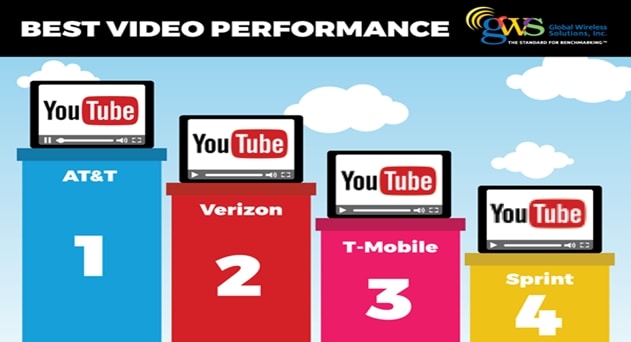AT&T's mobile network performed the best for video streaming, according to network benchmarking firm Global Wireless Solutions (GWS)’s OneScore ranking.
According to the nationwide mobile video streaming test by GWS, AT&T performed best overall taking three of four category wins ahead of second place Verizon. T-Mobile came in third, despite clocking one category win, and Sprint came in last in the exercise.
GWS said it undertook real-world testing that focused on the four factors that can cause the most frustration for consumers when watching their favorite show on their smartphone or tablet. These are loading (time to first picture), video quality, amount of video freezing, and reliability of the video stream.
Following are some of the test results;
- 98% of videos streamed over AT&T’s network were successfully completed; also videos tested on AT&T only froze 0.82% of the time while having a higher quality playback than other networks.
- T-Mobile stepped up to the video starting line the quickest, sneaking first place with an average loading time of 3.2 seconds, 0.2 seconds quicker than AT&T.
- By comparison, 8.5% of the videos streamed on Sprint failed, 2% of the time they froze, and loading time averaged 3.9 seconds. Meanwhile, Verizon had a respectable showing by completing just under 98% of the videos streamed on its network along with middle of the pack finishes with the other factors.
The results come from video tests carried out across the US (covering a population base of 304 million in the locations tested) using specialized mobile network testing.
The OneScore methodology takes into account consumer considerations by assigning a weight to each of the video performance factors. For example, reliability has a greater weighting than the loading time factor because successful video completion is more important to consumers.
Paul Carter, CEO, Global Wireless Solutions
Mobile video streaming is due to drive a 7x increase in mobile data traffic by 2023. Today, YouTube already reaches more millennials (18-34 year olds) on mobile alone than any TV network. It’s clear that video streaming is having and will continue to have a major impact on mobile operator networks – more and more customers expect to stream their favorite shows, videos, and other broadband content where ever they are – whether it’s commuting, waiting for their next appointment, or just taking a break while out and about.




















